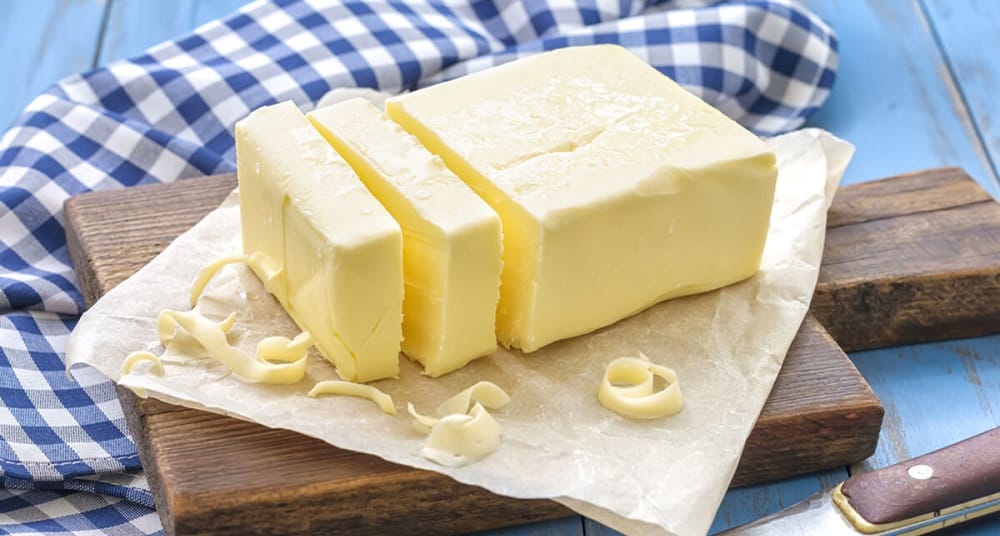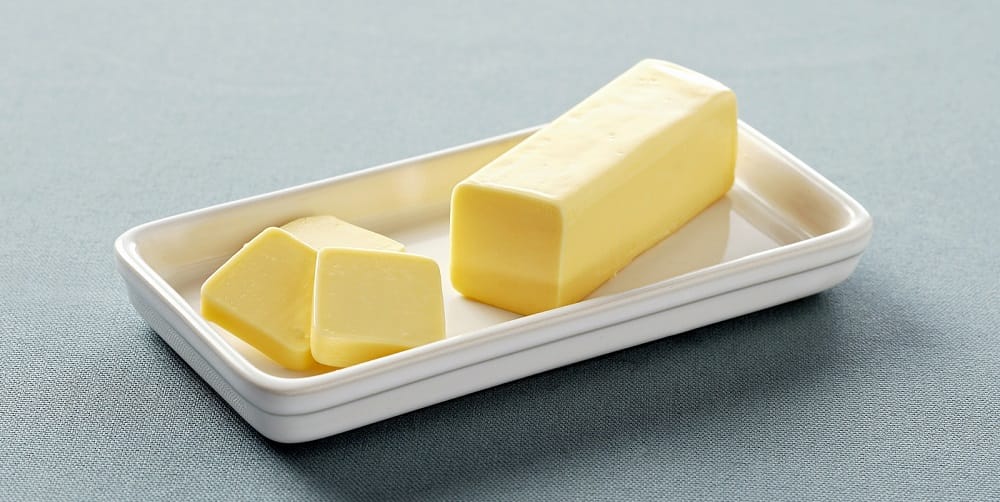How much is a pat of butter? Known as the fat made from the cream of a cow’s milk, butter isn’t pure fat, and about 17 % of it is water while up to 4% is milk solids. So generally, our favorite baking and cooking ingredient is only about 80% fats. Now, I have been recently receiving questions on how much a pat of butter is and I’d like to answer that question here.
Today, butters sold on the market are wrapped in foil and are 1/2-tablespoon size rectangles. In some cases, they are for sale in plastic cups and measure between one and two teaspoons.
Not many people know what really a ‘pat’ is, and sometimes I also get confused. I can sometimes remember little cardboard, the coated paper, and the butter square, which make up the pat of butter.
In the past, you might have seen those sides of the packaging that were exposed to the elements. But this has changed, and now the butter we can buy are completely in cups or foil.
A Pat of Butter: How Much Is It?

Sources reveal that one pound contains 48 pats of butter, so there is ½ tablespoon, 9 grams, 1/3 ounce and 1 ½ teaspoons in one pat of butter. So if you would encounter a recipe that asks for a pat of butter, you probably know by now how much of butter to use.
So remember, a butter pat is a butter made into an ornamental shape or a ball for that matter for use at the table, or it is an individual square slice from a ¼-pound commercial butter stick.
Calories in a Butter Pat
The number of calories is 36 and the calories from fat is 36, and the total fat is 4.1 grams or 6% in one serving of butter pat of one inch square and one-third inch in height, or five grams.
What Makes Butter Special
The word “butter” is coined from the term butyric acid, referring to the compound in dairy products, including parmesan cheese and rancid butter. It is a popular culinary ingredient for many years due to its wide range of uses in our kitchen – including on baking, roasting and virtually all types of cooking you want to be tastier.
It has a creamy and rich mouth feel, but it has a sublime flavor. There are no other types of fat sold for cooking or baking that quite come close to the feel and flavor that butter can give.
It is a versatile cooking ingredient that can be used for cooking, stewing, slow cooking, baking and preparing foods, such as peanuts and potatoes, and so much more. Butter is used in almost every preparation in the kitchen, so most of us have it in our kitchen.
And the way that it melts in our mouth is another thing that makes it unique. Did you know that its melting temperature is 98.6 degrees Fahrenheit that happens to be our mouth’s temperature too? So that means that butter melts in our mouths but not vegetable shortening that has a higher melting point and that leaves out mouths with a greasy feeling.

Cooking with Butter
Butter, as mentioned earlier, has its melting point, and when it does melt, it can develop a nutty flavor, because the milk solid, including the sugars and proteins, caramelize. When you used it for sautéing, or cooking medium heat, the butter can enhance and complement the flavor of the dish you’re cooking. For sauces, butter has the distinct flavor that adds richness to them.
Butter Downsides
There is this something called its ‘smoke point.’ And if you’ve heard it the first time, then you are probably wondering what that is.
While butter is a valuable kitchen helper, there are also drawbacks using it. When it comes to smoke point, butter has the lowest versus other types of fat. So with that said, you might have been noticing why butter is smoking at certain points when heated – at about 350 degrees F.
So if you’re using it in sautéing oysters, for instance, you might want to combine butter with other types of oil, including Canola oil, because this cooking method requires at least 400 degrees F.
For baking, butter is used for its tasty flavor versus a shortening that doesn’t have any. However, it can make our dough a bit difficult to manage because of butter’s hardness.
Shortening leaves a greasy feeling in your mouth, and it is pure fat. It also contains 20% more fat regarding weight. It might not be a good option if you’re trying to eat healthily or losing weight. Instead, it might be better to use butter with only 80% fat. Bakers, on the other hand, use a combination of butter and shortening.
Conclusion
There you have what you need to know about how much is a pat of butter so that you will use exactly how much of butter is asked if you see the word ‘pat’ in the instructions.
Do you have any other tips to share with the community regarding a pat of butter? Share it with us in the comment section below, or post this article on social media so others would learn too!

